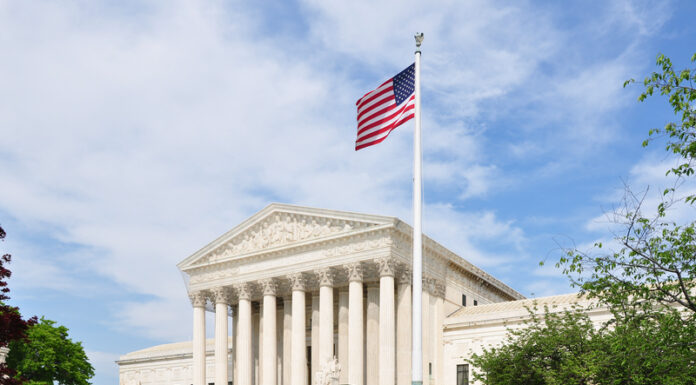The Supreme Court on Tuesday, July 8, lifted a lower court order that had blocked sweeping layoffs of federal workers at nearly two dozen agencies, clearing the way for the Trump administration to resume its efforts to drastically cut the size of the federal government. The high court’s order allows the administration to move forward with mass terminations while legal challenges continue.
In a brief unsigned opinion, the Supreme Court indicated that the Trump administration was likely to succeed on its argument that the executive order and implementing memorandum were lawful. The court noted it was not assessing the legality of any specific plans for layoffs at federal agencies, stating those plans were not before the court.
Justice Ketanji Brown Jackson was the sole member of the nine-person court to publicly dissent from the decision. Jackson wrote that the district court’s temporary preservation of the status quo was “no match for this court’s demonstrated enthusiasm for greenlighting this president’s legally dubious actions in an emergency posture.” She described the decision as wrong given what little the court knows about what is actually happening on the ground.
The ruling overturns a May 22 decision by US District Judge Susan Illston in San Francisco, who had issued a preliminary injunction pausing reductions in force and reorganization of the executive branch. Illston had sided with a coalition of unions, nonprofits and local governments that challenged the administration’s plans. The judge argued that Congress creates federal agencies, funds them and gives them duties that they must carry out by statute.
The decision impacts 22 federal agencies, including the Cabinet-level Departments of Agriculture, Health and Human Services, State, Energy, Interior, Commerce and others. The Environmental Protection Agency, National Science Foundation and other agencies are also affected by the ruling.
Trump had issued an executive order in February directing agencies to prepare for large-scale reductions in force as part of what he called a critical transformation of the federal bureaucracy. The administration’s plans were developed through the Department of Government Efficiency, which had been led by Elon Musk before his departure.
Attorney General Pam Bondi celebrated the court’s decision, writing on social media that it stopped lawless lower courts from restricting Trump’s authority over federal personnel. She indicated that federal agencies can now become more efficient than ever before.
The State Department moved quickly following the ruling, announcing it would fire roughly 1,300 employees by email. Secretary of State Marco Rubio had told Congress in May that the department planned to reduce its workforce by more than 15 percent, or roughly 2,000 people, to downsize what he called a bloated bureaucracy.
Layoff notices are being delivered to more than 1,000 civil servants and another 246 foreign service officers with domestic assignments in the United States. Targeted foreign service officers will be immediately placed on administrative leave for 120 days, after which they will formally be out of their jobs. The separation period is 60 days for most other affected civil servants.
A bulk of the State Department’s reduction efforts target bureaus that focus on promoting human rights and democracy abroad and diplomatic conflict resolution, including the Bureau of Democracy, Human Rights, and Labor, and the Bureau for Conflict and Stabilization Operations.
Federal employees across affected agencies expressed anxiety about the ruling’s implications. Nicole Cantello, president of a union local representing employees in the EPA‘s Chicago-based regional office, noted there was a lot of apprehension among staffers who have no idea what will happen next. EPA employees in the agency’s science office are among the most concerned following earlier announcements about restructuring science staff.
Interior Department employees are also preparing for layoff announcements that had been paused by the court’s injunction. An internal Energy Department document reviewed earlier this year showed the department weighing deep program cuts and deeming approximately 56 percent of its staff as essential.
A senior White House official indicated Wednesday that the administration plans to quickly resume its wide-ranging layoffs and restructuring. The official noted that agencies had their plans basically ready to go prior to the court’s injunction and that reducing the size of the federal government would be front and center as a priority.
The coalition of labor unions, nonprofit organizations, cities and counties that brought the case expressed disappointment with the Supreme Court’s order. They argued in a statement that the decision dealt a serious blow to democracy and puts services that Americans rely on in grave jeopardy.
The legal battle over Trump’s attempt to downsize the workforce continues despite the lifted injunction. The dispute over the administration’s mass-layoff directive will proceed in lower courts, and additional legal challenges to agencies’ individual layoff plans are expected once those are released. The administration’s drastic overhaul was originally due to be finalized by September 30, though the ongoing litigation may impact that timeline.








